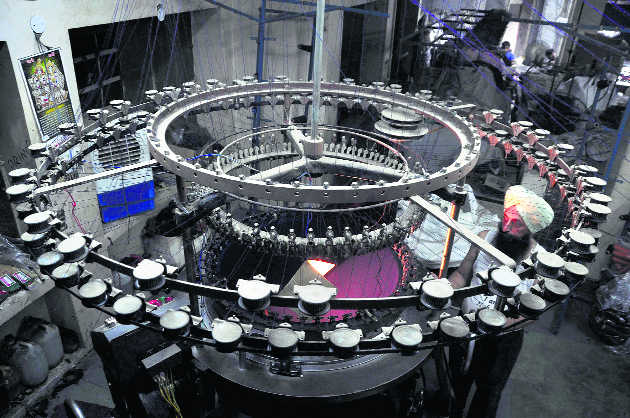
New Delhi, December 30
The year 2018 may turn out to be a challenging year for India’s textile and garment industry, with exporters still reeling under the impact of GST and outward shipments likely to miss the USD 45 billion target for 2017-18.Garment exporters have been demanding that the duty reimbursement to them be retained at the pre-GST (Goods and Services Tax) drawback rate of 7.5 per cent, amid declining outbound shipments.India’s apparel exports declined 39 per cent in value terms in October. However, India’s cotton production could touch 37.7 million bales in the year that began on October 1, up from 34.5 million bales produced in 2016/17.The production of import substitute bivoltine silk in the country is expected to reach around 6,200 metric tonnes (MT) in 2017-18 as compared to 5,266 MT a year ago, registering an increase of 19 per cent, according to the Textile Ministry.Towards end of the year, a scheme for capacity building in textile sector to boost skill development and job creation was launched with an outlay of Rs 1,300 crore. Around 10 lakh people are expected to be imparted skill and certified in various segments of the textile sector through the scheme, out of which 1 lakh will be in traditional sectors.The year also witnessed the first mega international trade event for the textile sector, which was inaugurated by Prime Minister Narendra Modi in Gandhinagar (Gujarat) on June 30. The event recorded participation from more than 100 countries. A total of 65 MoUs with an estimated value of over Rs 11,000 crore were signed during the exhibition.India Handmade Bazaar, an online portal to provide direct market access facility to artisans and weavers, was launched in January.In November, the Textiles Ministry notified post-GST rates under the scheme for Remission of State Levies (RoSL) on exports of readymade garments and made-ups. For garments, the rates range between 1.25 per cent and 1.70 per cent and for made-ups, they range between 1.40 per cent and 2.20 per cent. The rates were effective from October.The government also enhanced the rates under Merchandise Exports from India Scheme (MEIS) on readymade garments and made-ups from 2 per cent to 4 per cent. The rates will be applicable between November 1, 2017, and June 30, 2018. A comprehensive national policy covering all segments of the textiles industry can give a push to exports, which have remained stagnant because of less demand and stiff competition. — PTI Wait for policy continuesThe year 2017 has turned out to be a mixed bag for the textile sector. While initiatives were unveiled for power loom units and weavers, the much-awaited new National Textiles Policy is yet to see the light of day. Such policy can give a push to exports from the sector, which have remained stagnant for the past four fiscal years.Highlights of 2017
- Garment exporters demand duty reimbursement to be retained at the pre-GST (Goods and Services Tax) drawback rate of 7.5%.
- India’s apparel exports decline to 39% in value terms in October.
- The production of import substitute bivoltine silk in the country expected to reach around 6,200 metric tonnes
- The first mega international trade event for the textile sector inaugurated in Gandhinagar (Gujarat) on June 30.
- India Handmade Bazaar, an online portal to provide direct market access to artisans and weavers, launched in January.
- The Textiles Ministry notifies post-GST rates under the scheme for Remission of State Levies in November.
[“Source-tribuneindia”]
